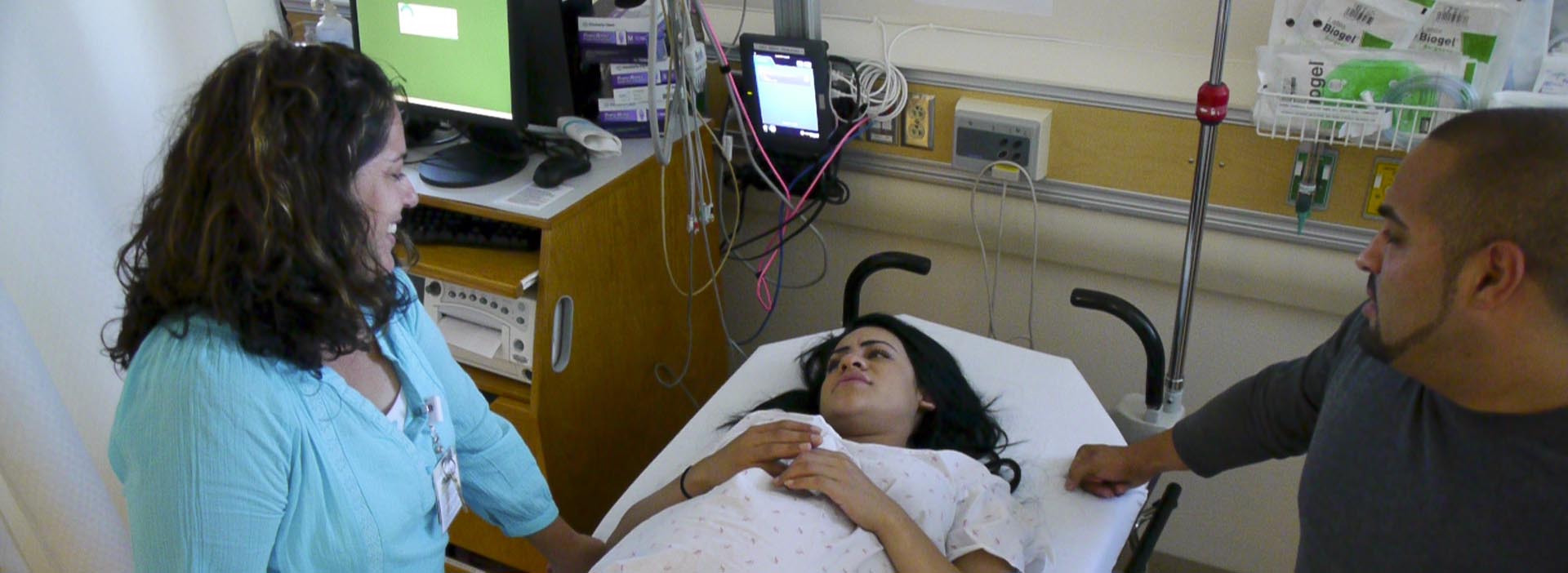The weeks and months following childbirth are filled with recovery and adapting to a new life. Compared with a vaginal delivery, if you have a cesarean delivery (C-section), you will need to take additional safety measures and give yourself longer to heal.
C-sections are common. In the U.S., 1 in 3 births are C-section deliveries. New Mexico’s cesarean delivery rate in 2020 was slightly over 1 in 4. Sometimes it is necessary to plan for a c-section if there are certain pregnancy conditions.
A C-section is a major surgery. A doctor may recommend a c-section for a variety of reasons, such as: if the baby or woman’s life is in danger, there is a blockage in the birth canal, there are multiple babies, the woman previously had a c-section or labor isn’t progressing normally for another reason. Most women stay in the hospital for 2-4 days after delivery. Then after returning home, most women need 6-8 weeks to fully recover.
After you have a baby, your body continues to go through many postpartum (after-pregnancy) changes while your hormone levels return to what they were before your pregnancy. Some changes, such as feeling tired or sore, are normal. But some problems, such as running a fever or having heavy bleeding, may be a sign that you need medical care.
Follow your doctor’s or midwife’s instructions after a C-section. You can use this quick guide as a starting point to decide when to call for help.
What’s Normal After a C-section
You may have these common symptoms after a C-section:
- Contractions that feel like menstrual cramps for several days
- Dull pain in your belly for the first couple days
- Full, tender breasts
- Gas, bloating and irregular bowel movements for several days after surgery
- Groggy and/or nauseous for the first day or two from medications you had during surgery
- Itching near your incision
- Mild fatigue or sadness (the “baby blues”)
- Red vaginal discharge for several days, changing from pinkish brown to a watery, yellowish white. You may continue to bleed for a few weeks, like after a vaginal delivery.
- Soreness or bruising over the cut (incision) in your lower abdomen, for up to one week.
What Is Not Normal After a C-section
If you have any of the following symptoms, call your doctor right away:
- Chest pain or difficulty breathing
- Fever over 100.4 degrees F
- Heavy or continuous bleeding around your incision
- Heavy vaginal bleeding: Changing your pad more than once an hour or blood clots larger than the size of a plum
- Sharp or intense pain around your incision
- Pus, swelling or redness around your incision
- Severe depression: Examples of possible signs of postpartum depression include severe mood swings, inability to complete normal daily tasks, intense anxiety, physical pain, brain fog or overwhelming fatigue
- Something feels off
- Sudden, unexplained weight gain (more than 2 pounds in 1 week)
Learn How to Spot Postpartum Depression Symptoms with our Free ROSE Program
To help prevent postpartum depression, the UNM Midwifery team offers a free training course called the ROSES ProgramRelated Reading
Tips for a Faster Recovery
After a C-section, taking good care of yourself and your incision can make a big difference in the speed and effectiveness of your recovery process. Ask for help from family members or friends able to drive you to appointments or errands.
After your C-section, we suggest:
- Avoid driving for at least 2 weeks. However, continue to wear your seatbelt if you ride in a vehicle.
- Be careful when coughing or sneezing: Doing so could reopen the incision from your C-section.
- Get plenty of rest: If you can’t find long find lengthy spans of time to rest, several 10–15-minute naps sprinkled throughout your day add up.
- Go to follow-up appointments: Your first postpartum checkups should be 2 and 6 weeks after you give birth.
- Manage your pain safely: A heating pad may help relieve discomfort. Your doctor may also prescribe you with an over-the-counter pain reliever.
- Protect your ab muscles: For the first 12 weeks after a C-section, avoid activities that make you breathe hard or strain your muscles. Avoid sit-ups, crunches, push-ups, planks or movements that put pressure on your core muscles.
- Take care of your incision: Your doctor will tell you how long to keep your wound covered. Keep the area clean and dry. Use mild soap and water to clean the wound. Do not go swimming, sit in a hot tub or take a long bath until your doctor tells you it is ok.
- Take it easy: Never lift anything heavier than your baby while your incision is healing. Avoid driving or walking up and down stairs frequently, if possible. Take slow, gentle walks for exercise.

